If you are getting ready to introduce note reading in music, this blog post is for you. Whether you are using note reading games, flashcards or any number of other activities, the way that you structure your lesson can make a big difference on how quickly your students are successful at note reading. Reading music can be a BREEZE for your students, if you follow a few simple steps.
Is Note Reading Important in Music
Let me ask you this question – is reading words important in language? YES! Obviously, you can get by ok with just spoken language, but you are losing access to an entire mode of communication.
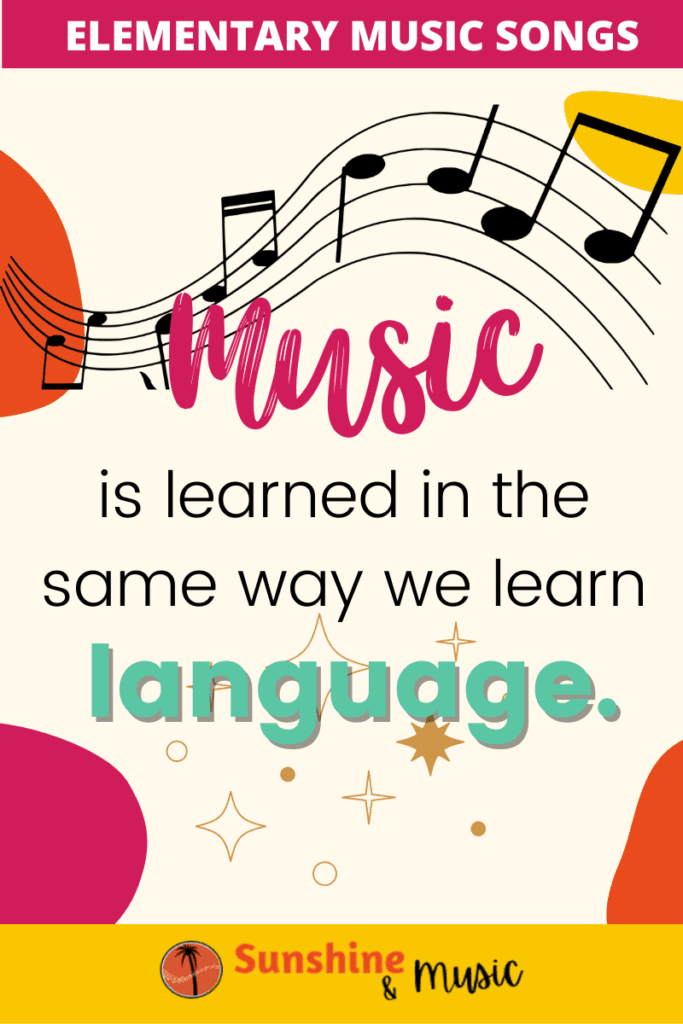
Just like in language, reading is important in music. Yes, you can get by in music without knowing how to read. You can even EXCEL at performance. But still, you are missing an entire mode of musical communication if you cannot read.
So yes, note reading is very important in music. That being said, many people push this expectation on students WAY before they have the readiness for it. Do these steps in the right order, and you will see a marked difference in how your students (or you yourself) pick up the skill of reading music.
The Language of Music
Let’s talk for a moment about music as it compares to language. Music is NOT exactly a language. BUT … when we are talking about the way that we learn music, language is learned in almost the exact same way, so comparing the two is a helpful way to understand the process.
Think of a baby. They listen and absorb a whole vocabulary of words long before they ever make their first sound. Then they work on speaking and WAAAAAY down the road, they learn to read and write.
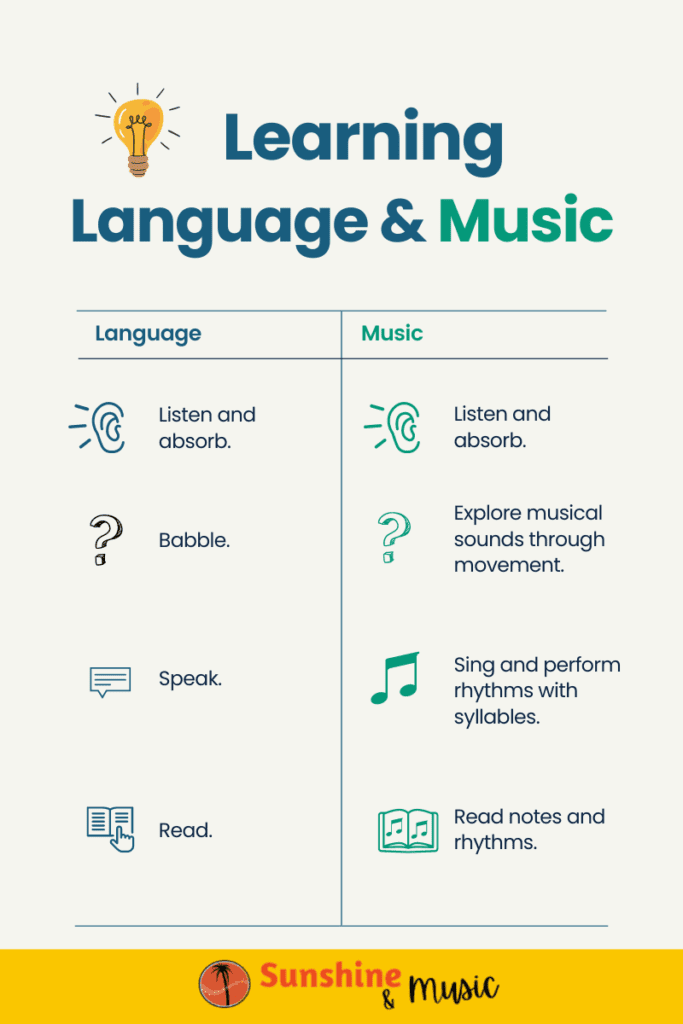
This is where a lot of music curriculums are out of whack. They are asking kids to read and write before they have learned to even speak (or sing and perform rhythms, in the case of music).
I propose to you that there is a better way! Let’s talk about it!
When Should I Teach Note Reading
The age that you start teaching note reading doesn’t matter. Their readiness for reading DOES matter. I would much rather have a kindergartener that can move to the beat and improvise their own rhythm, than one who can robotically read quarter notes and rests without a sense of how they fit into the bigger musical picture.
But Erin, my district’s scope and sequence proclaim that they have to meet certain benchmarks at certain grade levels, and some of those benchmarks involve reading.
Yes, gentle reader. I hear you. I feel you. I AM one of you. Don’t worry. I’ve got you. But first let’s talk about how you SHOULD try to do things.
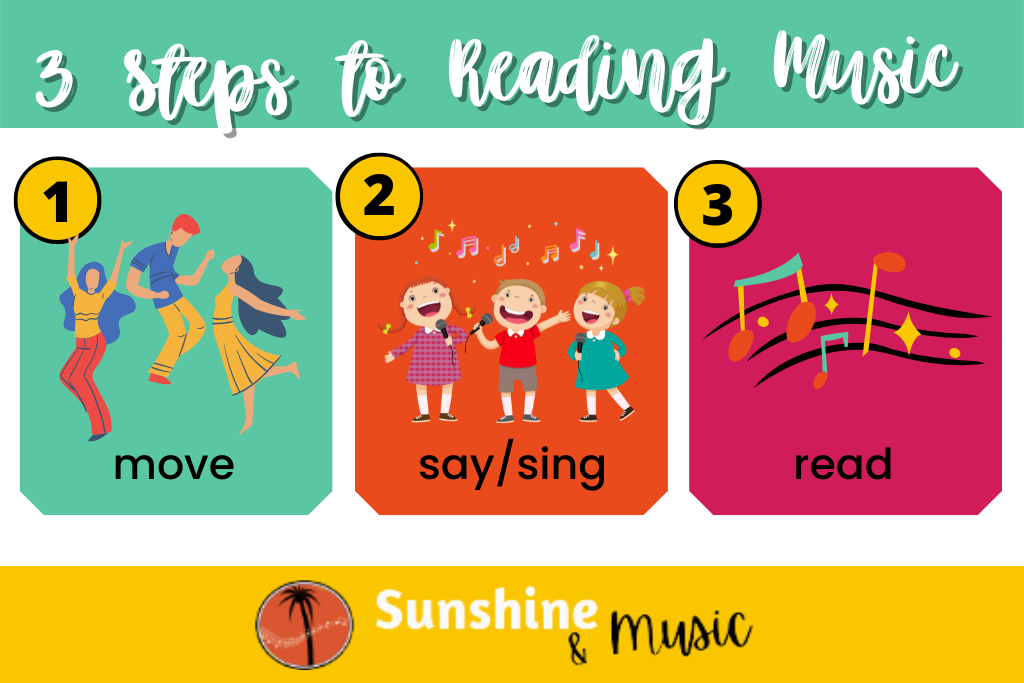
Teaching Note Reading in Three Simple Steps
Step 1: Move
Before your students even utter a rhythmic syllable, they should be moving! This is that point where they are rhythm “babies,” soaking up a vocabulary through listening and movement, so it is internalized and they have an internal reference point when you go on to the next steps.
This works out great because movement is just what little bodies need. Plan lots and lots and lots of activities that explore movement. Fast and slow, high and low. Long and short. That is all preparation that will help when you start with high and low pitches. Or fast and slow rhythms.
Build up to activities that focus on the big beat. Then the little beat. Once they can move it, you are ready to for step two.
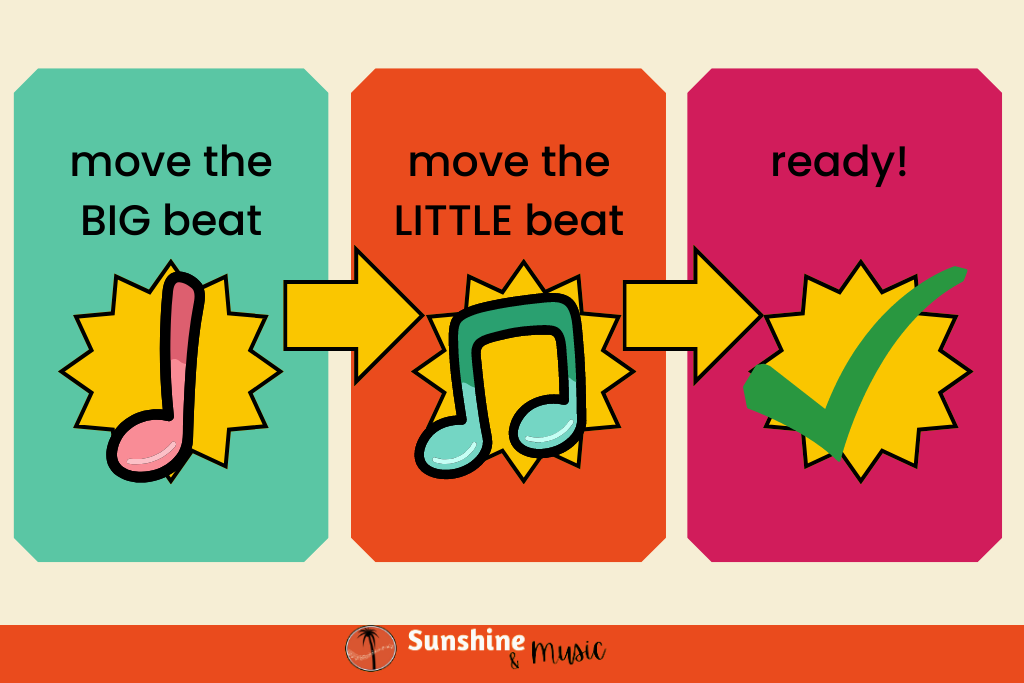
Step 2: Say
Now we can add syllables. Use whatever syllables work for you. Just educate yourself on WHY you are using that syllable system if possible. Here is a great article that outlines some of the main rhythm syllable systems and what they are based on.
Now when you add your Du-De’s or Ti-Ti’s, kids will have a muscle memory of those movements and therefore, it’s gonna stick more.
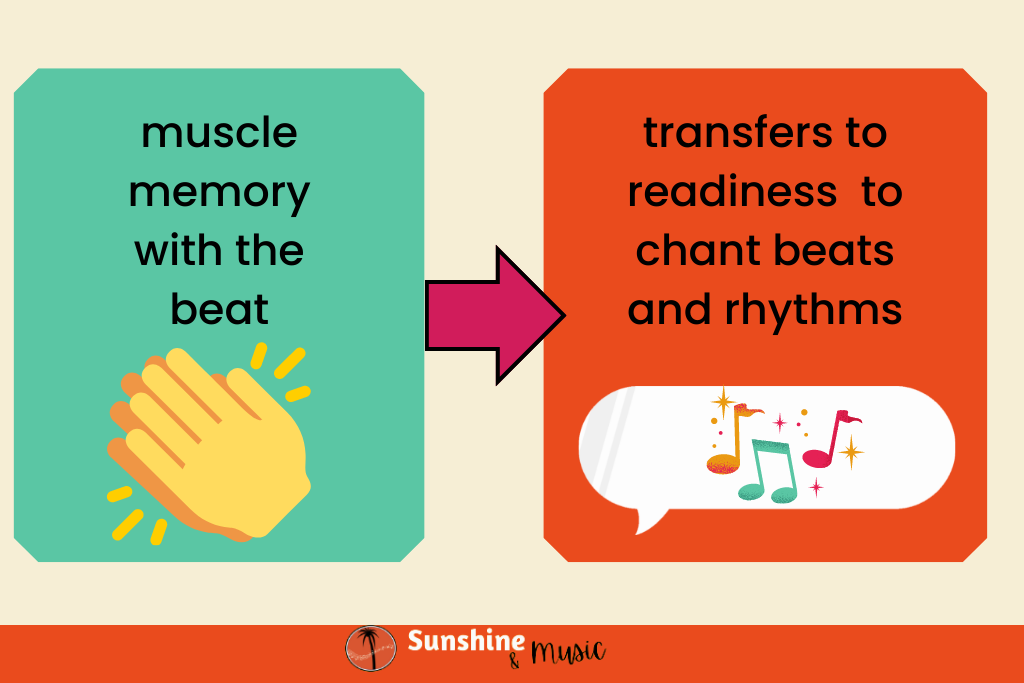
Don’t add reading yet! This is “sound before sight,” a concept that is promoted by many methodologies, but often forgotten! Just say rhythm and have students echo you.
Once your students can tap a steady beat while saying the right syllable and echo rhythm patterns with syllables (and ideally create their own rhythmic patterns – with or without syllables), they are ready for step three.
Step 3: Read
Congratulations! You have laid a strong foundation for your students, and now they are finally ready to truly read with comprehension.
When I first introduce my very first note – the quarter note, I take a song and we move to the big beat, saying our syllable. THEN, I pull out the written note and tell them what it says. We perform the beat while looking at it in notation. Then we do the same with the little beat.
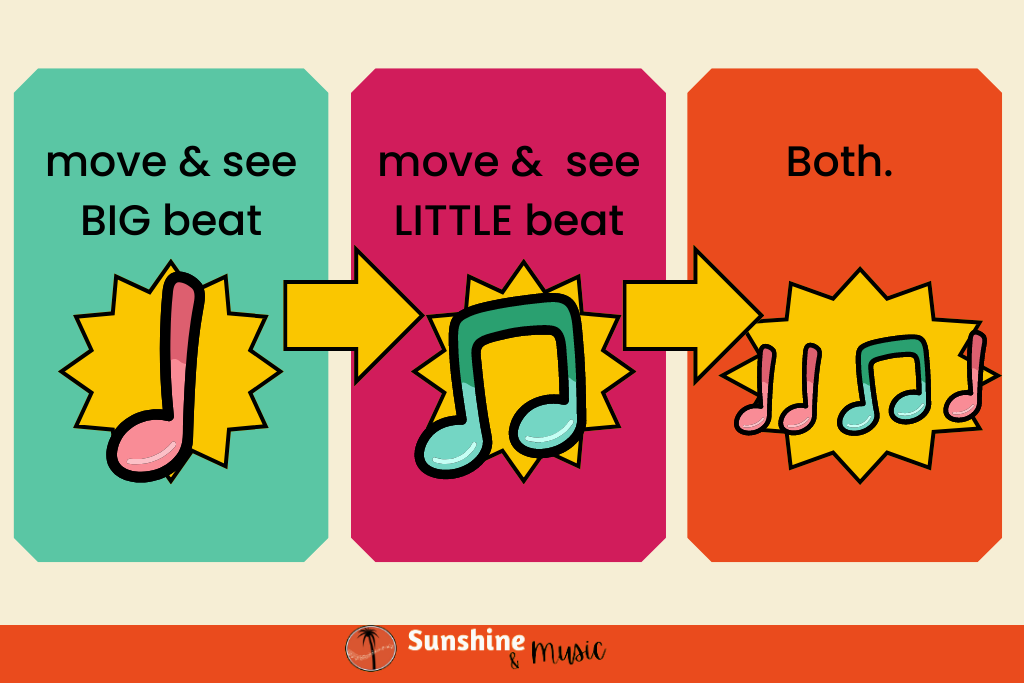
Only after I have introduced both beats separately using prior knowledge of moving and chanting each beat do I sit the kids down and talk about how when we mix the big beat and little beat together, we can create rhythms.
This video shows the process I go through to teach reading each type of beat and then combining together to create rhythms.
I suggest starting with echo reading, where you read patterns they have heard by ear often before, but now you show the notation.
Then once they have the concept, you can very quickly (usually by the next lesson or earlier for me), have them read the rhythms without your assistance.
A Note About Creativity
With each of these steps, having students copy and echo is critical, but I would be remiss if I didn’t mention allowing opportunities for creativity. Students can only fully take ownership of their own learning when you ease off the reins a little and give them a chance to steer the ship.
Here are some example of how you can use creativity is each step along the way:
- Move – have them create their own movement to the beat or rhythm. Have them clap you a rhythm or play it on a drum.
- Say – Have students say their own rhythm for the class to echo, or chant back a response to you
- Read – Have students arrange their own rhythms to read.

What Order Should I Teach Rhythms
Rhythms are based off of the beat. And they fall into the context of a meter. So step one is to have your students feel the beat. And not just in the meter that you plan to teach first (99% sure that’ll be duple). They will better understand duple if you give them examples of what duple isn’t. I have a whole blog post dedicated to teaching what something is by teaching what it isn’t.
Once students understand the main beat – also known as the BIG beat or macrobeat in some circles, it is time to add a sense of meter by moving the little beat – or microbeat. In other words, after you have taught them quarter notes, add paired eight notes. Only then do I personally add in rests, as I feel they have internalized a better sense of time and therefore a better understanding of how long a rest should be.
Then we get into the fun stuff. There isn’t really a CORRECT order that you need to do things, so I will just share the order that I tend to add new note values, and why.
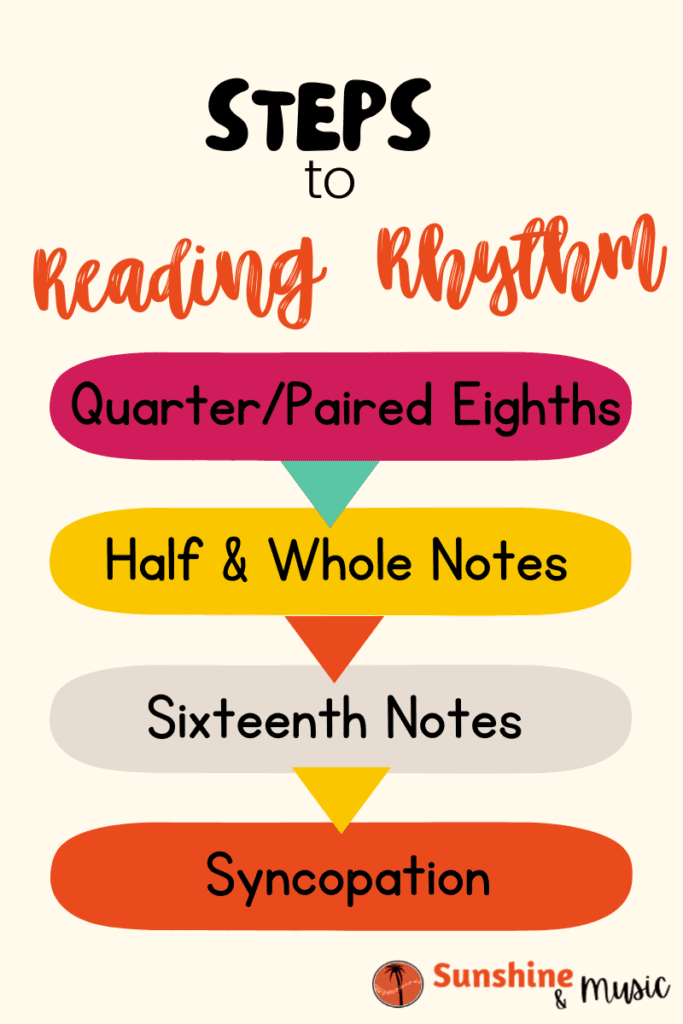
First I add half notes and rests. They are our very first elongations – notes longer than a beat. It is a nice, simple concept, and will pave the way for whole notes, which I teach after that.
Next is sixteenth notes, which are divisions – shorter than the little beat. These require a little more dexterity to clap or play so they are farther down my list.
Finally, we add syncopation. I usually just focus on the classic “syncopa” rhythm of eighth-quarter-eighth, but you do you. This is a more advanced concept that sometimes browns kids’ minds, so I save it for last.
Also a quick PSA about triple meter. I like to teach triple as well as duple (refer back to my previous comments about richer learning by comparing things that are different from one another). I tend to teach triple somewhere after half notes but before 16th notes.
And that’s the rhythm reading sequence I use. Again, you really can’t go wrong, as long as you start with the big beat and little beat, you have a strong foundation to teach any other rhythms from there.
What About Reading Notes on the Staff?
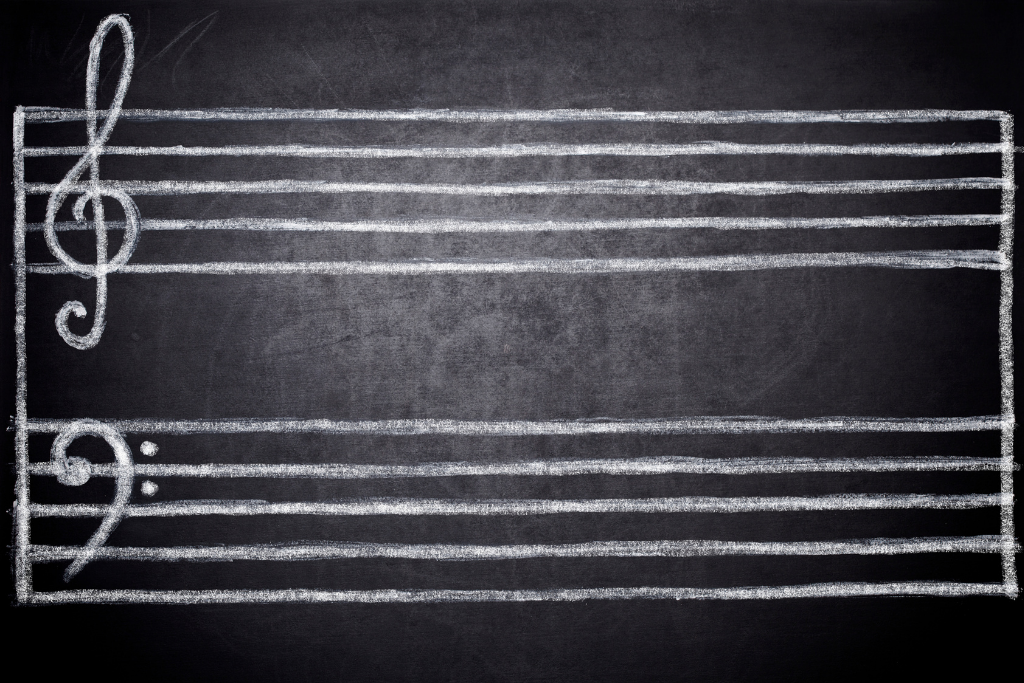
I am so glad you asked! It’s the same process to learn pitches as rhythms. Move, Say, Read. I just didn’t get into all the details because I don’t know if we are all up for reading an article that long in one sitting. Here is an article on some of the ways I start to teach note reading on the staff.
Did you find this article helpful? If you want to know when new blog posts come out, join my mailing list. Incidentally, when you join you get a fabulous little mini-lesson that has a rhythm play-along, so it actually fits wonderfully with this post!
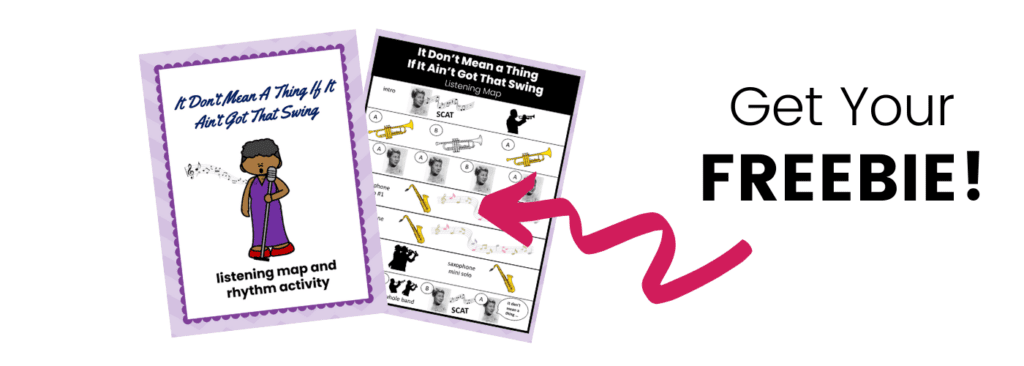
That’s Great, But How Do I Reconcile This With My Music Reading Standards in My Curriculum?
This is the question, isn’t it? There is sometimes tension and discrepancies between what we know to be best practice and what the district or textbook or state tell us we need to do.
There is no silver bullet to make these two things align perfectly, but I have found a few work-arounds over the years.
Stick It At the End of the Year
Have a standard that is a little advanced for your students within a grade level? Stick it way at the end of the year so you country and work in some readiness activities so they can have better success when they get around to it.
First Exposure
Sometimes I just graze the surface of the standard, but don’t expect mastery of it. For example, if one of my standards in kindergarten were to read music in iconic notation, I might pop up some iconic notation at some point during a lesson and give them some exposure to it, but not emphasize it or expect mastery and definitely not assess it.
Take a Shortcut
Sometimes you might have to shortcut some of the steps to reading readiness in the interest of time. Maybe you get to say rhythms with syllables, but don’t have the change to improvise or create with the rhythms before your move on to reading. Maybe you have to jump right to reading quarters and eighths together instead of learning each one separately.
Just be aware that there is a small readiness cost anytime you take a shortcut. So use with care! You might think you are saving time, but end up getting held back because your students don’t grasp the material as well.
Next Steps in Reading Music – Start Writing Music!
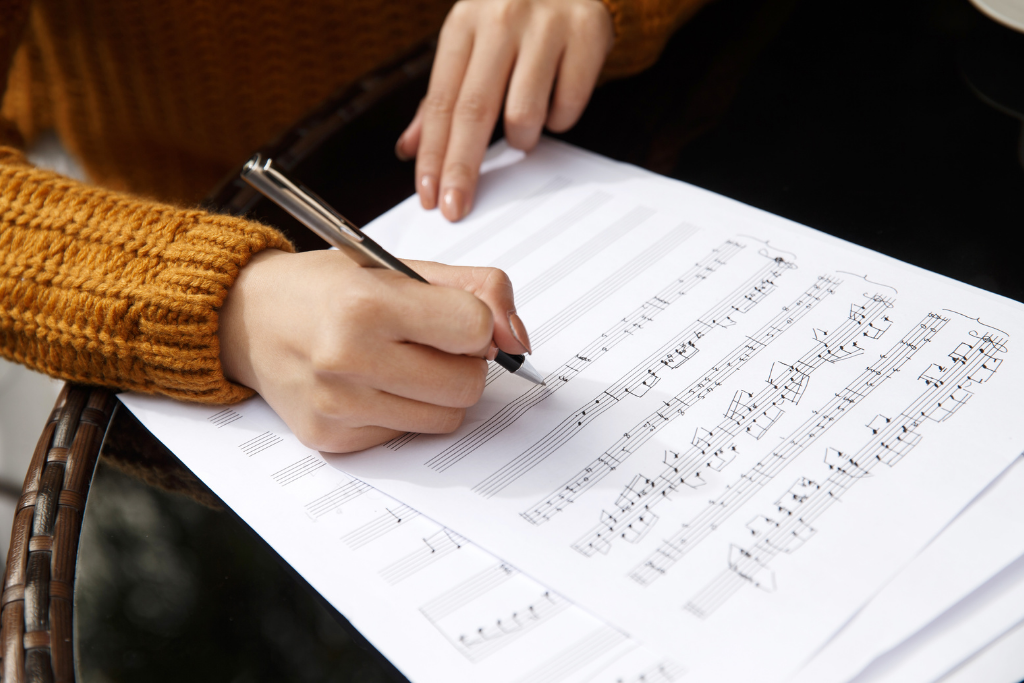
Once your students are rocking their note reading – which honestly I find that they do pretty easily if you use this sequence, you can quickly turn to note writing.
You can do quick and simple writing exercises as well as more advanced composing.
Here is a great kit with all the reading and writing worksheets for each phase along the way. It even included pitch reading and writing AND song writing worksheets.
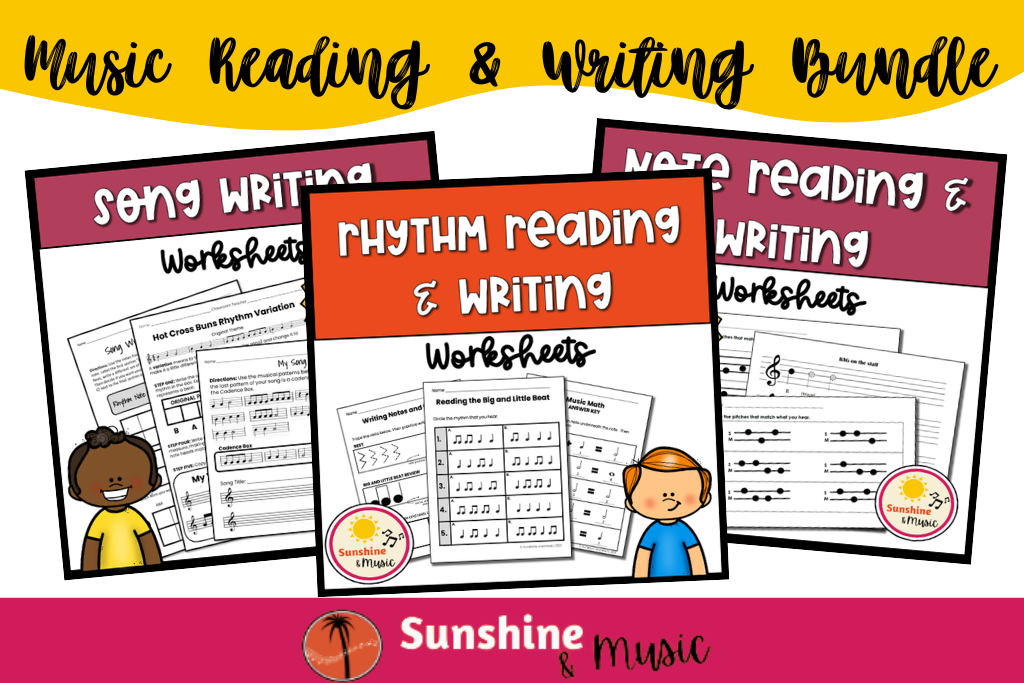
Other Blog Posts You May Enjoy
It Don’t Mean a Thing – Rhythm Play Along
Get On Board the Word Rhythm Train – first grade rhythm compositions

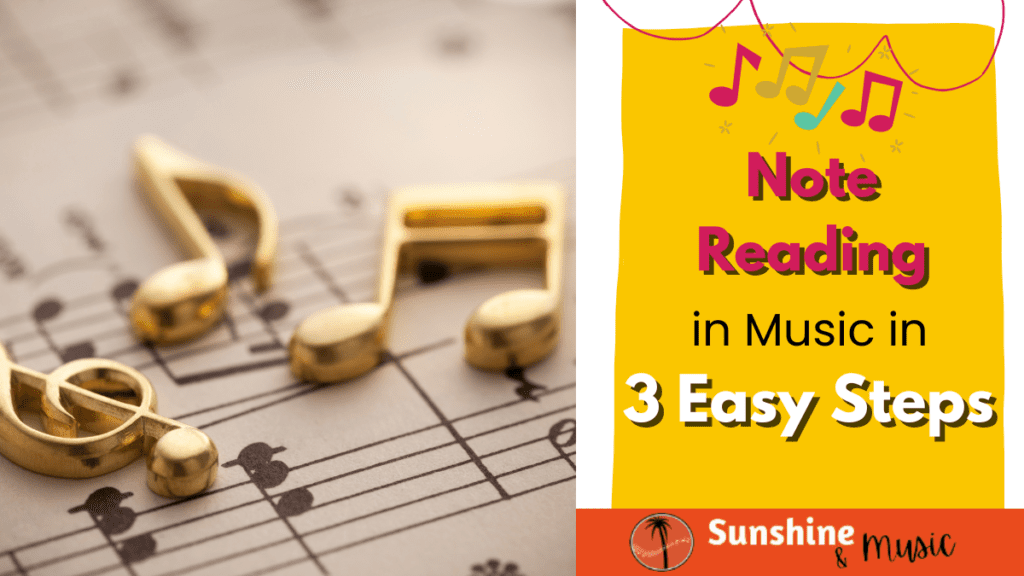



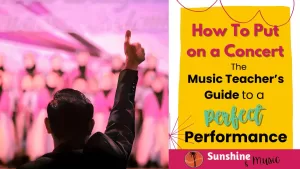


4 Responses
I have found your methods to be tried and true over my 50 plus yrears of teaching.
Thanks!
I love this article, Erin! Thanks so much! I’ll pass this on to my colleagues!
Hi Tracy! Great to hear from you. Glad you liked it!